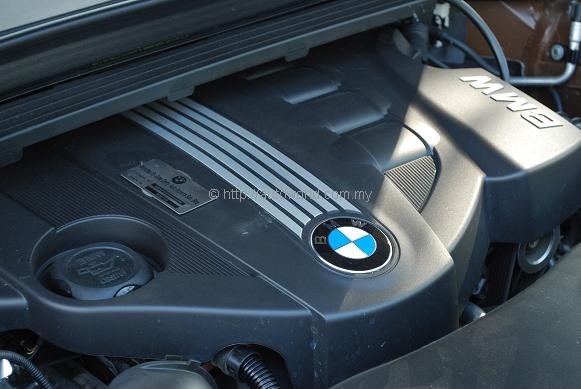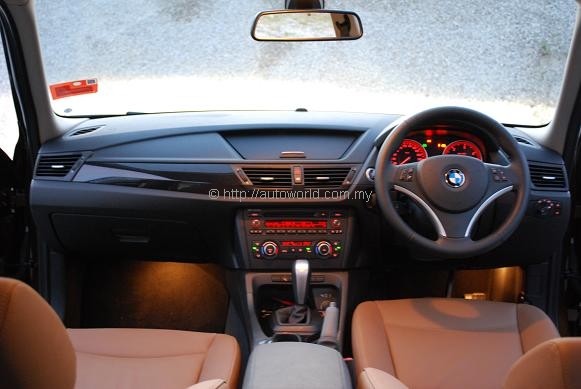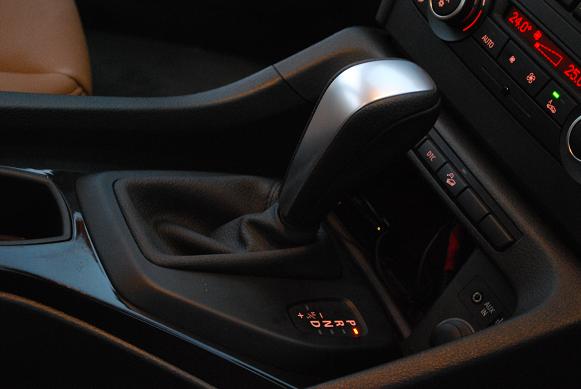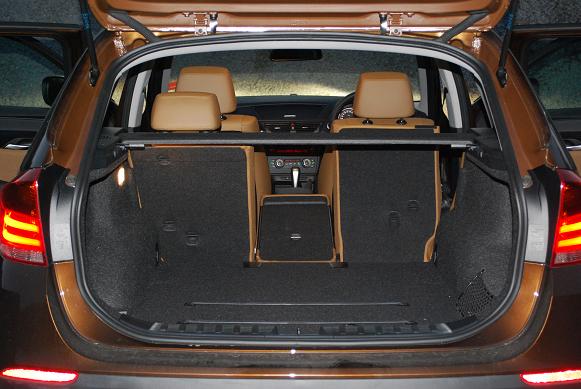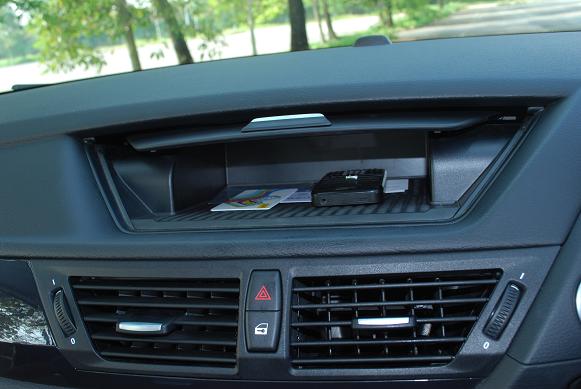BMW X1 xDrive20d – xRatedDrive
BMW Malaysia has recently brought in the X1, the new entry point into BMW SAV ownership. The official global debut of the X1 took place in July 2009, with assembly at Leipzig commencing in October 2009. It then took the folks at Cyberjaya just six months to cart the first shipment into Malaysia in time for an early April launch.
Although the company’s focus for this year is certainly the F10 5-Series, the X1 also represents no small investment from the Bavarians. Globally, the X1 is available with a 3.0-litre straight-six petrol, a 2.0-litre turbodiesel in three stages of tune, and a 2.0-litre petrol that was recently introduced.
Only two variants have made it to Malaysia, and we recently got hold of one for a complete review.
The Test Car
Our test car for this review is the only variant of the X1 currently on sale in Malaysia – the xDrive20d. The petrol-powered rear-wheel drive sDrive18i variant will only be arriving in June.
When it reached our hands, the test car had clocked just under 3,000km on its odometer – indicating that the moving parts should have been properly run in, and yet not overly worn out.
Specifying your X1 to the trim level of our test car will cost you RM299,800 on-the-road without insurance. Our insurance calculator estimates that you should set aside a further RM8,000 to insure the car at a value of RM295,000.
Exterior
Alright, let’s be honest. The X1 is not at all good-looking, and that’s being diplomatic. Though, to be fair to the folks at Munich, this is entirely in keeping with the spirit of BMWs of the now-departed Chris Bangle era – they’re all styled to provoke a love-it or hate-it response. The X1 pushed it a little too far in my books.
The front end, in particular, looks too fussy for my tastes, and although I have been assured that the fog lamps are mounted at waist level for a practical purpose – to avoid being covered by mud when going off-road – they are aesthetically not very correct. Some might be reminded of Cindy Crawford’s mole, but, no.
However, once you get past the front fascia and get around to the sides and eventually to the tail end, you’ll find that things aren’t so bad anymore. Leaving the sides unpainted is a good styling move in particular, as it gives the X1 a more rugged and durable look about it.
Interior
Amongst its German competitors, BMW has never been renown for making the better cabins, and the X1 is unlikely to change that. At a glance, it is obvious from the dashboard that the X1 is not the highest ranking model in BMW hierarchy. These days, any storage compartments parked right on top of the centre console means only one thing, the omission of an LCD screen, and in BMW’s case, it means no iDrive.
That on its own, is acceptable. But what is not acceptable is that for the RM300k that the buyer has shelled out, he or she will have to also live with some pretty hard plastics in very prominent areas of the dash – instrument panel cowling among them.
Fortunately, however, things at least appear well screwed together. Panel gaps are consistent as far as we can see, and the various buttons and switches still have a feel of solidity about them.
Rear leg room is compromised, but the rear seat backs are offered with 40:20:40 split-folding facility, which allows for a high degree of flexibility and practicality. This feature enables the user to expand the X1’s cargo hold from 420 to 1,350 litres. A very good touch.
Mechanicals
Under the X1’s hood is all-too-familiar and all-too-torquey 2.0-litre N47 D20 four-cylinder turbodiesel that already powers the 320d, E60 520d, and the X3 xDrive20d in our shores.
European buyers have the option of specifying this engine in 143hp, 177hp, and 204hp states of tune. In Malaysia, we will only be getting the 177hp version for the tested xDrive20d mated to the familiar 6-speed Steptronic auto from ZF.
Quoted figures are also familiar to us too, as they are the same with the abovementioned three diesel models introduced in Malaysia last year. Peak output of 177hp is generated at 4,000rpm, whilst maximum torque of 350Nm is spread between 1,750 and 3,000rpm.
Stopping power is generated by ventilated discs all-round, with a traditional hydraulic rack-and-pinion setup providing steering. Springing the X1 are double wishbones up front and BMW’s trademark five-arm multi-link suspension behind.
Of course, the technical highlight of the X1, at least the version tested here, is its all-capable xDrive all-wheel drive system. The system’s prowess has already been proven in how it allows the X3, X5, and X6 to effortlessly outhandle the competition. We did not expect anything less with the X1.
On the Move
First thing you should know about the X1 is that if you’re looking for a vehicle to potter around town, you’re looking at the wrong car. Its steering is very meaty, which is confidence-inspiring for keen drivers, but not very pleasant for the one-finger steering-twirlers.
Additionally, the suspension setup is biased too much in the direction of sportiness that it’s not a very forgiving ride on poorly-tarred surfaces. The engine, although identical in tune with the 320d and 520d which we have tested extensively, also does not sound as refined at idle or when revved.
However, once you find an empty stretch of road with the right amount of curves and gun it, everything then starts to fall into place. The weighty steering, firm suspension, and the almighty xDrive system all work together to enable you to corner this one-and-a-half tonne SUV at ridiculous speeds with absolute confidence.
Body roll, whether or not you consider the X1’s substantial height, is impressively suppressed, but what’s most amazing is how it sticks, almost stubbornly, to its cornering lines. Contrary to conventional wisdom, you cannot ease off when driving the X1. There is a simple reason for this, and it’s because the xDrive system does not work when you don’t bury the throttle into the footwell.
Behind the scenes, the system is continuously working to redistribute torque to wheels with the most traction, ensuring that your cornering lines are spot on, everytime. Easing off, simply messes it all up. There’s only one way to drive the X1 – hard, very hard. The way this thing begs for hard driving is not unlike that of a hormone-charged teenager.
It’s also impressive along the straights, with the same diesel surge of torque that we experienced in the hugely impressive 320d and 520d. In our private test tracks, we were able to feel out BMW’s claimed top speed of 213kph quite easily.
Conclusion
As a family vehicle, the X1 has few things going for it. Compared to cheaper, and more sensible, alternatives from Japan and Korea, the X1 loses out in all of space, equipment, and perceived build quality. Its ride is also too firm for it to be an attractive mode of transport for the in-laws.
There is only one reason why anyone would buy an X1, for the way it drives. The way it grips and goes around corners simply beggars belief. At the same time the diesel motor up front gives you access to a generous amount of grunt while sipping a miserly amount of fuel in return for your pleasure.
So, if you’re looking for an SUV for reasons of practicality, the X1 isn’t likely to work for you. However, if driving pleasure takes greater priority for you, then the X1 gives you something to think about.
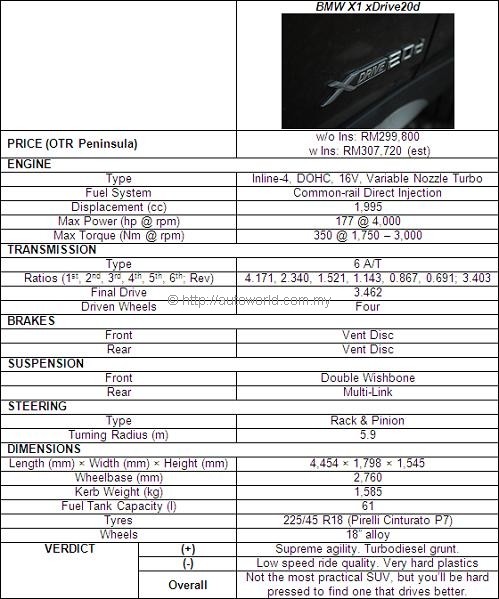 |






